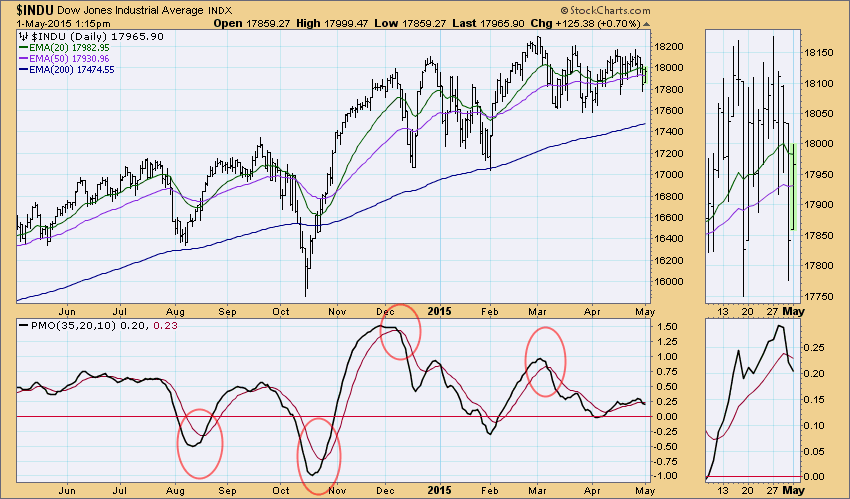
During our last webinar we received questions and comments to which we were unable to respond due to time constraints, so we will take this opportunity to address some of the ones deemed to have broad interest.
Q: Please review the definitions of Buy, Neutral, and Sell signals.
A: First let me emphasize that the signals generated by the various timing models are intended as information flags, not action commands. They let us know that certain conditions have been met, and that we should look at the chart to see if any action is appropriate. Definitions are:
BUY - Go long. (In some cases we use the word "bullish" instead of "BUY," but it means the same thing.)
Neutral - This means to be in cash or fully hedged. Moving to Neutral would typically mean we would have to sell to close open long positions in order to achieve a neutral stance. This is why we say that Neutral is a "soft" sell signal.
SELL - Go short. (In some cases we use the word "bearish" instead of "SELL," but it means the same thing.)
Again, let me emphasize that the signals are intended to alert readers that an opportunity may be presenting itself, but that situation must be verified by chart analysis before any action is taken.
Q: When would one enter a trade or exit based on the PMO indicator?
A: In our reports we track PMO signals based upon their crossing up or down through their 10EMA (signal line), but action could be taken based when the PMO changes direction (forming a top or bottom). On the chart below we can see that PMO direction changes can be frequent and unprofitable, but I have circled the instances where the PMO direction changes were typical of what we should look for. Note that (1) the PMO moved smoothly and smartly ahead of the PMO top or bottom, (2) the top/bottom formed quickly and unambiguously, and (3) EMA crossovers were quick and clean. The PMO top/bottom is the first hint that price may be changing direction, and it is the more risky environment for taking action. The EMA crossover takes place after fairly significant price movement and it is more likely that the change in direction will persist long enough to make a profitable trade; however, we would also miss a good part of the move we are trying to catch.
Q: I still didn’t get what the Trend Model signals are good for. What do we do with that information?
A: Years ago I coined the slogan, "Technical analysis is a windsock, not a crystal ball." The Trend Model is the windsock that helps us determine the trend of a price index based upon purely objective standards. A BUY signal means the trend is up, a SELL signal means that the trend is down, and Neutral means that the trend is undetermined. The signals give us a starting point when we are looking for opportunities. If we are looking to go long, the newer BUY signals will give us some candidates to consider. Newer SELL signals highlight short candidates.
Q: Why do you use the EMA periods of 20, 50, 200. What is the rationale behind these periods?
A: These are commonly used periods for summarizing short-, intermediate-, and long-term price action. Their individual movement and their interaction with each other provide us with objective information about the trend. We use them in our analysis, but others may use other EMA combinations that work for them.
Be sure to attend our next DecisionPoint LIVE! webinar on Wednesday, May 13 at 4:30pm EDT.
Happy charting,
Carl







